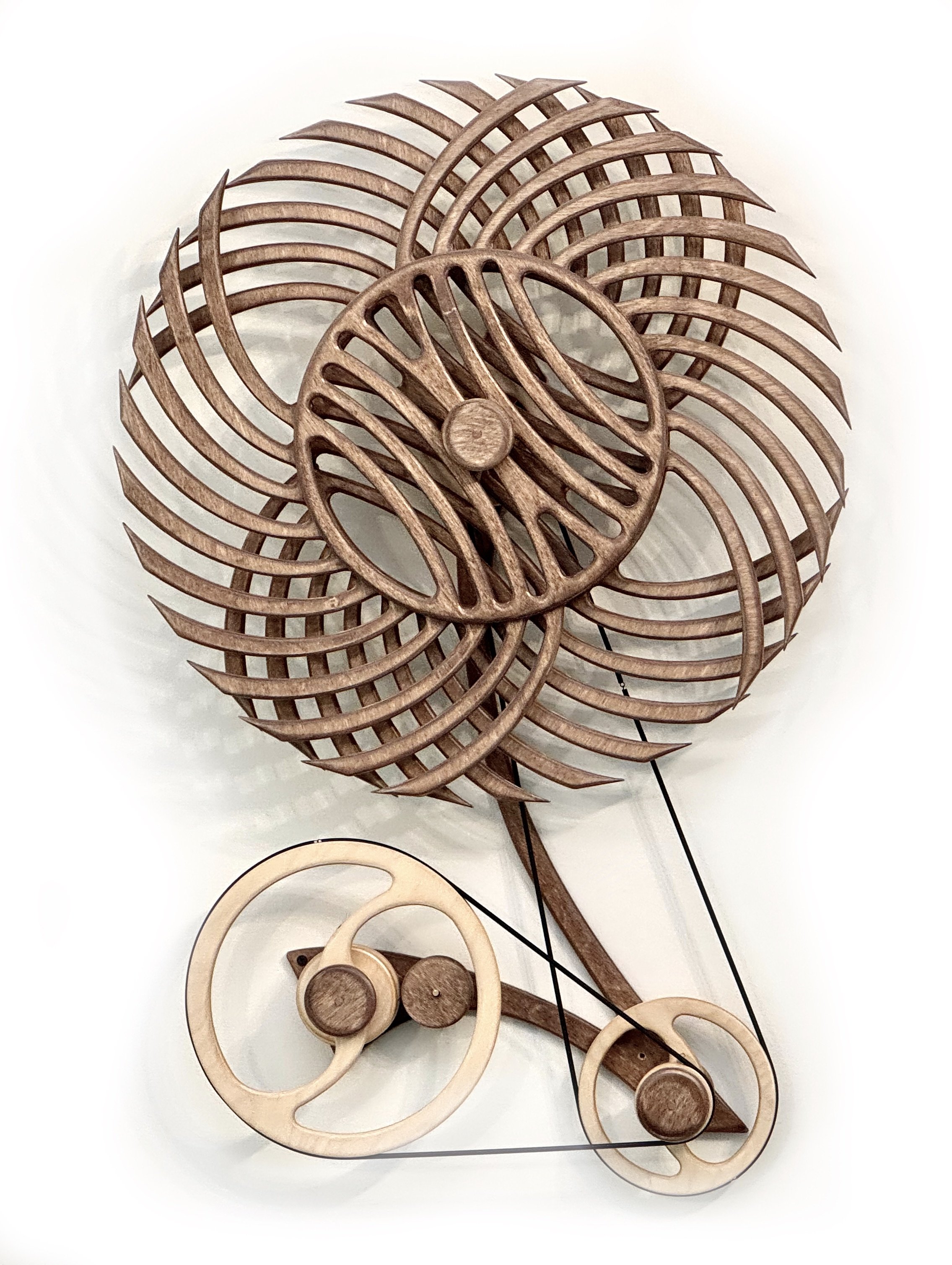Specifications:
Size 30” in diameter
Approximate Runtime: 10 hours
Price: $5000 - opening bid
One-of-a-kind
Shasta Study - Diamonds 1 ©2023
Introducing the Shasta Study Series
In 2016, I launched the Kindala series, which explored the hypnotic interplay of two patterning wheels rotating in unison at distinct, variable speeds. These sculptures revealed intricate patterns through slow, synchronized motion. Over subsequent years, I refined these designs using two mechanisms: the dependable center-wind system and the side-wind mechanism, where the spring and winder sit outside the patterning wheels. While the side-wind allows torque adjustment via pulley sizing, the center-wind’s fixed torque per spring “push” posed limitations—particularly for the delicate, unhurried motion central to Kindala.
Retirement has gifted me the freedom to tinker deeply. I have ample time to think, sketch, and experiment and I do. To address the center-wind’s rigidity, I theorized a “gearing down” solution: reducing torque through a cascade of compact pulleys. Though this risked increasing the winding effort (a potential annoyance), I forged ahead with a prototype. For testing, I repurposed lightweight Kindala wheels previously shelved due to their overly brisk movement under the old mechanism.
The experiment succeeded beyond expectations. Torque softened, yielding smoother, more deliberate patterns. While winding cycles jumped from 23 to 36 turns, the process proved effortless: a quick 20 manual spins followed by momentum-driven self-winding. This breakthrough unlocked new creative territory.
Emboldened, I designed patterning wheels once deemed impractical, culminating in Shasta. Along the way, I toyed with designs like Diamonds—initially envisioned as its own series—but the thrill of experimentation eclipsed my interest in mass production. Instead, I finished three unique Shasta Study sculptures for collectors, alongside Kindala Study - Galaxy, a fourth piece built with the original wheels that sparked this journey.
This series embodies the joy of problem-solving and the boundless curiosity that fuels my art—proof that constraints, when met with patience, can birth unexpected beauty.








